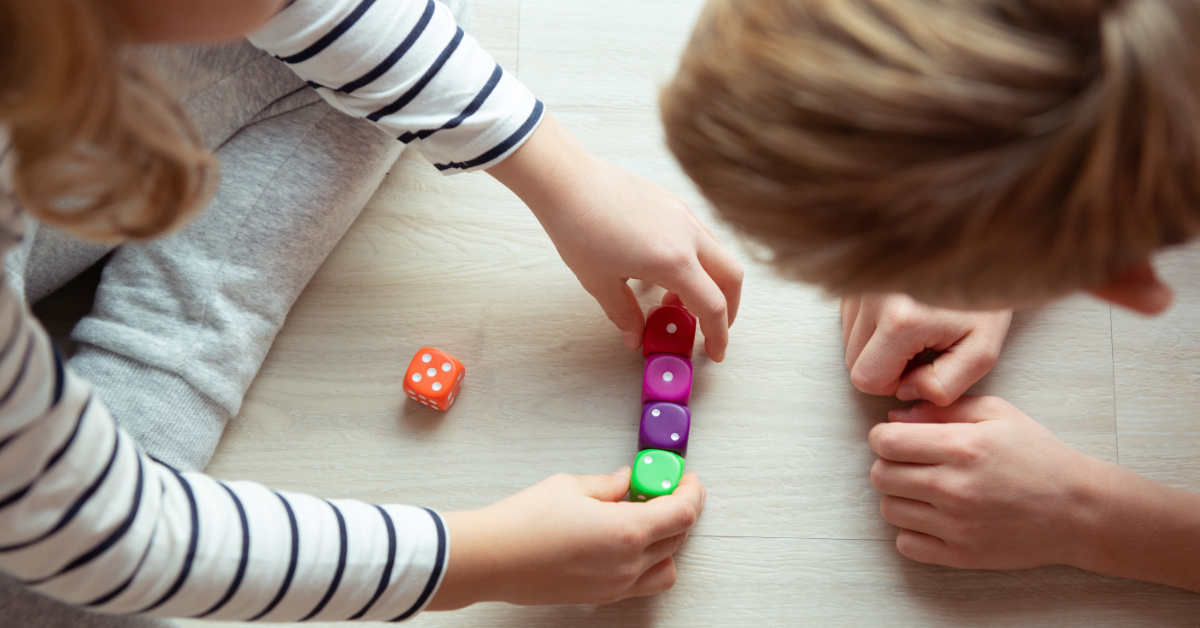
Teaching math can be much more than working problems from a textbook. You can turn outdoor activities and trips into opportunities to sharpen and teach math. Take advantage of backyard playtime, a walk in the woods, or a visit to a city or beach to talk about math.
The key ingredient to teaching math skills outdoors is to make the experience a positive one. In these instances, take the time for conversation, exploration, and extension of math concepts. Help your student develop awareness that math is everywhere. Encourage them to recognize shapes, patterns, and symmetry in their environment.
The following outdoor math activities may inspire your student to use their mathematical thinking skills while spending quality time together.
4 Outdoor Math Activities to Do Together
1) The Spectacular Spider Web
Geometry is the study of shapes and their properties. Spiders are born knowing how to design and spin a web. Each species of spider spins a unique design. Have your student research the geometrical parts of a spider web design and learn to identify components such as the bridge thread, radius threads, auxiliary spiral, and signal line. If your student is so inclined, they can try to draw or “spin” their own web using a wire coat hanger stretched into a circle and some yarn.
2) Seasons of Symmetry
When one half of an object is the mirror image of the other half, the object is said to have symmetry. Teach your student to look for different types of symmetry in nature to extend their knowledge and understanding of shapes and patterns. These may include wallpaper symmetry, fractal symmetry, and radial symmetry. During outdoor activities, you can challenge your student to search for examples of items in nature that have these types of symmetry. This activity can be continued throughout the year. Keep a running list of items they find in the places you visit and as the seasons change. The list may include butterfly wings, sunflowers, tree leaves, honeycomb, spider webs, snowflakes, nautilus shells, sea stars, peacocks, people, and even foods such as romanesco broccoli, pineapple, and the inside of a kiwi when sliced in half. Just be warned that, once your student is aware of it, they may begin to point out symmetry in everything they see!
3) A Sphere of Activity
A sphere is a perfectly round, three-dimensional object. Have fun outside with a beach ball, blowing bubbles, playing kickball, or playing with marbles. Ask your student to name examples of spheres in the natural world around them. The list may include a water drop, orange, or a sea urchin. Extend your student’s thinking by asking them to compare spheres that occur naturally and those that are manmade: what is different about them? For older and more mathematically mature students, you may choose to introduce the term spheroid as a figure that is approximately spherical in shape. If your student wishes, they can research the mathematical definition and its relation to 3D geometry and applications in calculus.
4) Geometry around Town
The architecture of buildings and other manmade objects provides a wonderful setting for your student to look for shapes and geometric properties. Point out architectural features, such as windows, in the shapes of squares, rectangles, or parallelograms. Your student can probably find roofs made up of triangles, rectangles, and trapezoids, but can they find a roof that is shaped like a cone? Patios and walls often display a variety of brick and stone patterns that may tessellate (completely fill the plane with no spaces in between). Stop to admire the fountain in the center of town and notice that arching water may form the shape of a parabola. Encourage your student to look all around. Where do they see triangles, pentagons, hexagons, octagons, and other polygons? Can they identify three-dimensional solids such as triangular prisms, rectangular prisms, and cylinders? Challenge them to discover that different shapes put together can form a new object. For example, what different shapes make up a bridge, water tower, or lamp post? By looking around from different angles and perspectives (standing, sitting, or lying on the ground), you will be amazed at what they can discover!
Remember that just because you want your student to learn math doesn’t mean they always need to be inside following a structured math lesson. Outdoor math activities are a great way to have fun learning math together. Your child will appreciate the opportunity to experiment, investigate, and talk with you about the wonders of mathematics.
Have You Heard About AIM?
Accelerated Individualized Mastery (AIM) provides a solution for struggling math students with gaps in their foundational math skills set. The AIM programs use proven Math-U-See strategies and manipulatives in combination with an accelerated approach to help students successfully master math concepts.




Leave a Reply